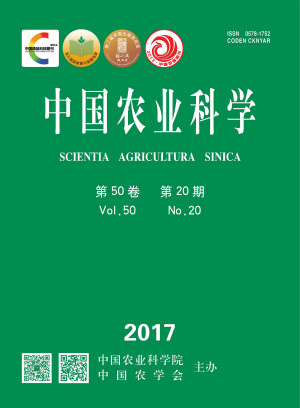【Objective】 In order to explain the theoretical basis for disease resistance molecular mechanism mediated by SA, the influence of transcriptional regulation of apple leaves response to salicylic acid was studied, and the SA signaling pathway and its regulated genes were identified.【Method】 The leaves of tissue culture apple ‘gala’ seedling growing under 24
℃ for 30 d were treated with 2 mmol?L-1 SA (0.2% ethanol treatment as control) for 12 h. Then the transcriptome libraries was constructed by using Illumina HiSeqTM 2000 sequencing technique, and the regulated genes of SA signaling pathway were screened by integrated bioinformatics analysis which included differential genes screening, condition specificity analysis, GO classification and KEGG enrichment analysis. The promotor of the gene which was specific response to SA was cloned and promotor activity was identified by using protoplast transformation technique. The specific response of different nucleotide fragment of promotor was verified.【Result】The original data of 750 439 459 and 751 596 153 bp sequences was obtained from CTRL and SA treatment samples, Which were 44.77% and 43.88% perfect match with the ‘golden delicious’ apple genome sequence, respectively. The transcriptome data of SA treated samples suggested that 3 329 genes were significantly expressed, including the genes related to biosynthesis of secondary metabolites pathway (the key enzyme of lignin synthetic pathway CAD, cytochrome P450, β-1,3-glucanase related to fungal resistance), the important functional genes involved in plant-pathogen pathway (calmodulin CaM, disease resistance protein RPM1, heat shock protein HSP90, WRKY transcription factors) and 33 condition specificity genes (NAC transcription factors, NIM1, WRKY40, Ethylene responsive factors and so on). Among them, 1 085 genes were up-regulated and 2 244 genes were down-regulated. Differentially expressed genes were participated in cellular process, metabolic process, binding, catalytic activity and so on. According to the transcriptome data, the promotor of
MdWRKY40 was cloned into the expression vector and placed in the upstream of the luciferase gene. After transforming the vector to apple protoplasts, the luciferase activity of SA treated samples was 20.6 times of the control samples, and the SA treated samples did not affected by ABA, JA or ACC, only showed the specific response to SA. The results suggested that the promotor sequence was specially response to SA in apple. Different segments of the promoter with different response ability to SA. The region 500-1 000 bp of the promoter, which located in the upstream of the WRKY40 transcription start site ATG, only was response to high concentrations of SA and no response to low concentrations of SA. For 1 500 bp sequence, the response ability to high SA concentrations was enhanced significantly, but just slightly increased with low SA concentration. The length of the 2 000 bp nucleotide fragment had a significant response to both the high and low concentrations of SA and achieved the strongest ability level. Compared to 2 000 bp fragment, the 2 500 bp fragment didn’t show further enhanced response to SA. Overexpression of the MdWRKY40 protein inhibited its own transcription.【Conclusion】 The DEGs obtained under 2 mmol?L
-1 SA treatment in apple leaves were involved in biosynthesis of phenylpropanoid and flavonoid, plant-pathogen interaction and plant hormone signal transduction pathways. The 2 500 bp nucleotide promotor sequence upstream of WRKY40 open reading frame was specific response to SA. There were unknown nucleotide sequences between 1 000-1 500 bp and 1 500-2 000 bp that significantly enhanced the sensitivity of the promoter response to SA, and the transcription regulation of
MdWRKY40 existed a feedback suppression mechanism.









